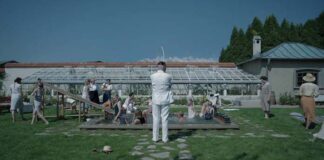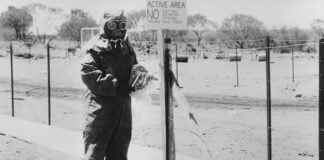Review: Australians At War: A Pictorial History
By A. K. MacDougall, The Five Mile Press, RRP $39.95, 2008 edition
Tony MacDougall’s revised edition of his book, Australians at War, is worth reading, for one reason.
Despite its attempt to glorify war and promote nationalist myths, he gives an honest account of Australian atrocities in war-both in decisions by the ruling class to throw away lives joining unnecessary conflicts and in the war crimes committed by the military in waging them.
These began as early as the Boer War (1902), when Harry “Breaker” Morant, Hancock and Witton joined an “irregular regiment”, the Bushveldt Carbineers, “that acquired a reputation for taking no prisoners”.
All three were charged by court martial for shooting Boer civilians. Morant and Hancock were found guilty and shot by firing squad.
When WWI began in 1914, the Australian ruling class saw “blood sacrifice” as a rite of passage. The Sydney Morning Herald articulated this in August that year, declaring, “It is our baptism of fire”. What this meant was that only 7000 of the first 32,000 volunteers who sailed returned home. In 1917, at the Ypres offensives, 38,000 Australians were killed or wounded.
But MacDougall admit that by 1918: “For all their undoubted valour, the Diggers had gained a reputation for ruthlessness in battle, for shooting prisoners-something of which English soldiers were seldom guilty.
“Robert Graves was shocked when an Australian boasted to him that the ‘greatest lark he’d ever had’ was lobbing bombs into a cellar full of surrendered German at Morlancourt.”
Germany was vilified for the use of mustard gas during that war in trench warfare on the Western Front. Yet MacDougall reveals that in September 1918, Australian artillery fired mustard gas shells at Germany’s Hindenberg Line.
In the war of “race” against Japan in the Pacific, the Battle of the Bismarck Sea stands out. In March 1943, RAAF Beaufighters strafed (machine gunned) Japanese survivors in the water after one Japanese ship sank.
Of course, you can already find this fact in Humphrey McQueen’s Japan to the Rescue (1991) but at least MacDougall doesn’t write it out of history.
In November 1944, the Australian government, led by Labor’s John Curtin, “had firmly decided that its forces’ role ‘should be on a scale to guarantee her an effective role in the peace settlement’.” This is explained by their concern to make sure Australia got its share of the expected colonial carve-up at war’s end.
One result of this policy was “Curtin’s insistence that Australian troops expel the last Japanese garrisons from the Australian territories in the South Pacific.”
This ran counter to American strategic planning, which aimed to bypass a number of Japanese island garrisons, even sizeable ones, in order to make a path towards Japan and ending the war by attacking the Japanese capital directly.
MacDougall sums up how Australia’s political decision-making impacted on military matters: “The operations of Australian forces in the Pacific in the last year of the war have been widely viewed as an unnecessary waste of lives.”
Australia attacked Japanese garrisons in New Guinea and the northern Solomons (Bougainville). “The 3rd Australian Division, arriving on Bougainville late in 1944, found a strange truce had been established between the Americans and the Japanese. However, General Savige ordered the enemy cleared from the centre of the island”, writes MacDougall.
In June 1945, at Beaufort on Borneo’s north-west coast, upon defeating the Japanese and learning of the 2000 Australian and Britsh POWs dying on the Sandakan Death March, Australian troops let loose indigenous headhunters on some of the 6000 Japanese who surrendered. These Japanese POWs were forced in a death march of their own, the “Beaufort Episode”.
During the Vietnam War, at the village of Binh Ba, five kilometres from the main Australian base at Nui Dat, a battle raged in June 1969. Australian tanks were “devastating the town while infantry fought house to house and helicopters hosed the plantation with fire”, tells MacDougall.
Australian casualties were nine, while more than 100 dead Vietnamese were counted. “A number of them were women and children, a fact that deeply troubled many of the Australians and still does.”
MacDougall intended this book to continue the eulogising of the Anzac myth, “to remind Australians of aspects of their past that are in danger of being forgotten”. But his honesty means that, if you can stomach it, he reveals the brutality of Australia’s rulers, and the horrors they have unleashed in order to secure a place alongside the world’s major powers.
By Tom Orsag





